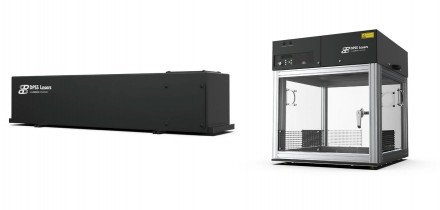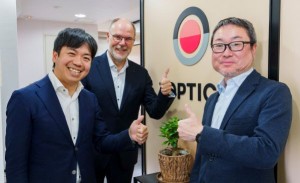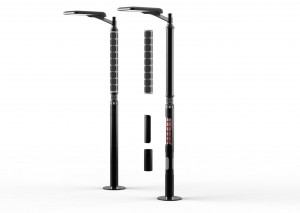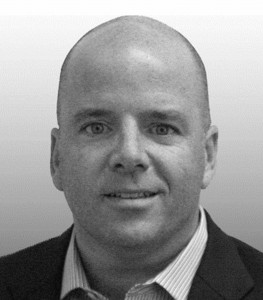
In this article, Jose Pozo, EPIC’s CTO, talks to Mark Botos, President and CEO of Aerotech, a US company engaged in the design and manufacture of high-performance motion control and positioning systems for customers worldwide.
Early days
Being the son of Aerotech’s founder, Mark has been involved with Aerotech all his life. Since being a small child, it was always understood that Mark and his brother would follow in their father’s footsteps and eventually run the company.
But as Mark reflects: “Although we always knew we would eventually take over, I think that my brother, I and others who joined the company around the same time brought new ideas and a sense of adventure to the company that helped to push us forward.”
After completing a BSc in Electrical and Electronics Engineering followed by an MBA from the University of Pittsburgh in 1990, Mark joined Aerotech full time. During the next 8 years, he worked in every corner of the company, gaining experience in manufacturing, engineering, sales, marketing and people management until he took over as CEO in 2008.
Telecoms crash
The 1990s saw rapid growth for Aerotech. As Mark recalls, the explosion of the world wide web, semiconductor, telecom and fiber optics made the decade an exciting, albeit a crazy, time. “In telecom, a lot of money was being thrown around on things like solutions for fibre alignment, but many companies struggled with scaling their operations for volume production or they bought systems in anticipation of demand which never fully materialized. At its peak, the demand we experienced was truly remarkable. The buying frenzy was so acute that subsequent to the downturn, we found out much equipment was never even put into operation.”
When the crash inevitably came in the early 2000s, it slowed down development, innovation and investment so severely that it took the telecom industry years to recover. In Aerotech’s case, although the 1990s had been important in terms of growing revenues, from a business risk perspective, they found themselves too concentrated in certain volatile markets like fibre optics and semicon. But this all changed after the crash, as they made a conscious decision to spread out into other markets, partly to give the company more stability and avoid a second telecoms type crash, but also because they wanted to take up the technological challenge of keeping pace with fast moving developments in areas such as life sciences, photonics, packaging, data storage and laser processing.
Growth of Aerotech
From the early 2000s, having taken a much broader view of potential markets, Aerotech started to push their high-performance motion control systems to customers in industry, government, science and research institutions around the world. Since that time, the company has grown three fold from 150 to around 500 employees and now supplies its technology for use in applications in markets such as medical device and life sciences, semiconductor, displays, photonics, automotive, data storage, laser processing, defense, aerospace and R&D.
Mark credits several factors for Aerotech’s success.
A consultative approach: Aerotech works very closely with their industrial and research customers to design systems and solutions that are truly collaborative. This approach, which has been key in securing both new and repeat business, has been made possible because Aerotech has always sought to employ staff who are both sales oriented and genuinely intrigued with the technology.
Industrial ready solutions for research: Aerotech has been very successful in reaching the academic market because of their reputation for building very robust, high performance “manufacturing capable” equipment. As Mark puts it: “Many of the devices developed in labs are strung together with metaphorical rubber bands and glue that are clearly not ready for prime-time manufacturing. The advantage of our equipment is that when a lab takes a demonstrator to a manufacturer, the manufacturer knows that the device has been built on a manufacturing-capable piece of equipment, so only minimal changes will be required for production.”
By enabling scientists to design their set-ups in a way that their research can be easily industrialized, Aerotech is one of a new breed of companies that are helping to revolutionize photonics research.
Thermal stability: One of the big challenges for photonics is temperature control and stability. In this regard, Aerotech has made a big impact by providing tools that address the temperature stability of devices. As Mark points out, over the years various factors have become important for precision movement. There was a time when Aerotech put all their systems on passive steel plates, then came the need for isolation, then active isolation and now it's moving on to temperature control, both of the environment and in terms of the products themselves: “As the technology has evolved and feature sizes have become smaller, temperature and vibrations have come into play. It’s a never-ending process as development continues.”
Active alignment: Another challenge for photonics is the requirement for active alignment. While passive alignment is suitable for some photonics components, other photonics devices like indium phosphide PICs and micro LEDs require active alignment. Until now, manufacturers, particularly the big semicon companies, have shied away from active alignment because of relatively long processing times. However, Aerotech has developed technologies both mechanically and in their software that are able to actively align components with ultra-high precision in the nanometer range at sub-second processing times. This is a unique selling point for Aerotech and also demonstrates the feasibility of fast active alignment.
Challenges for photonics
Overdependence on manufacturing in Asia: For Mark, the current Coronavirus situation underlies the difficulties of relying on volume production from Asia or any overly concentrated supply chain. Coronavirus is putting a lot of brakes on the supply chain in many industries, not just photonics. That being said, manufacturing requires a lot of people. And, as Asia has a very large supply of both technical and non-technical personnel, the region is likely to continue to dominate photonics manufacturing for the foreseeable future. As he concludes: “I think we're all going to have to learn how to adapt or alternatively, focus more on automation, which would be good for both Aerotech and the photonics community in general.”
Move into photonics by traditional semiconductor industries: Many in the photonics community believe the only way for photonics to achieve a fully realized future is by evolving into a semicon-based technology. As photonics technology becomes cheaper, it will expand out of niche markets into standardized semicon processes for high-volume production, as we are seeing now with volume micro LED manufacturing for displays and other lighting solutions. As Mark sees it, the fact that the chip factories are extremely good at mastering complicated and expensive processes will play to their advantage. These semicon organizations will be in a good position to move up the food chain and acquire some of the photonics companies, so they can start to integrate photonics into their products.
The need for the semicon industry to accept active alignment: As mentioned above, the semicon industry is reluctant to adopt active alignment because of the erroneous belief that active alignment does not allow fast processing speeds at low cost. However, as we have seen, Aerotech has demonstrated very fast, high-precision active alignment, indicating that the main challenge for the photonics sector is how to convince the semicon industry of the feasibility of integrating active processes.
The need to speed up acceptance of new technology: In the same vein, Mark is concerned about the time it takes for industry in general to accept new technologies and adopt them into manufacturing. As an example, Aerotech has been working for several years on integrating accelerometer technology into its motion and automation systems. But, with accelerometer technology shrinking to the chip level, it has only recently started to be accepted on the manufacturing floor.
Getting the message across: As Mark sees it, these examples illustrate the sad fact that there is both a fear and lack of knowledge of new technology that needs to be overcome to accelerate acceptance and move the technology faster. In this respect, industry associations like EPIC are performing a crucial role in educating the sector and getting the message out to the right people, e.g., that photonics is the next layer of semicon.
What would you do differently if you started again?
“One of the things I’d do differently is to spend more time on software. When I was studying electrical engineering in the late ‘80s, software wasn't what it is today. I always knew that I didn't want to be a software developer, but a more thorough grounding in software would have prepared me better for future developments. Equally, there are some technical areas that I should have paid more attention to like laser technology.”
What words of wisdom do you have for the next generation of entrepreneurs?
“First, follow your passions. In retrospect, I’ve come to realize that there's more to life than just money and success. So, make sure you do something that really interests you.”
“Second, although you may be interested in a particular technology, you need to have a very healthy appreciation for the other non-technological disciplines. I’ve seen a lot of entrepreneurs lose control of what they have simply because they don’t understand the basics of things like accounting, finance and marketing. Ignorance of these disciplines can easily undo your dreams.”
“Communication is particularly important: you may have a great technical solution, but if you can’t get the message out about why it’s such a great solution, you won’t get it into the marketplace. That’s why companies have marketing departments. And if you’re not interested in the topic, make sure you partner with someone who is.”
“Third, many people dream about becoming CEO because that’s where the perceived glory is. But, engineering is equally, if not more, important. There are a lot of people who can tell you how to do something, like devise a marketing strategy or even be a CEO, but there are very few people who know what to do, e.g. to solve a complicated technical problem. So, if you like technology and you’re good at it, think twice before you move into management.”
Written by Jose Pozo, Director of Technology and Innovation at EPIC (European Photonics Industry Consortium)













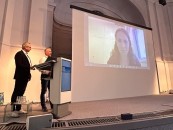

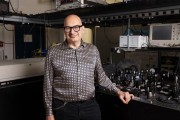



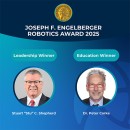
















 Back to Features
Back to Features










